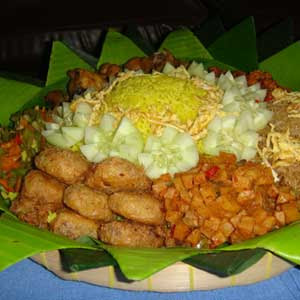
The only way to keep up with the latest about is to constantly stay on the lookout for new information. If you read everything you find about , it won't take long for you to become an influential authority.
Food is not only Bali suckling pig and rice just ...
If you go to a holiday in Bali, you do not have to worry about eating rice three times a day, as the local Bali. With the influence of expatriates in Bali you everything, including typical product of your own country.
Restaurant, owned by foreigners, have many options on the dishes that you will have water at the mouth when you're done checking the menu. Courts around the world are presented, some mixed with a touch of Bali in Indonesia or to create a sensational new twist.
Fortunately, the original traditional Balinese and Indonesian food is still very much present on the menu in any restaurant or in the hands of foreigners or the Balinese themselves. But I must admit, the best place for food in Bali is a place where you Bali crowd to eat.
So in this case: do as the local do.
For the real die hard cultural experience you can walk to every corner of the street, where you can find someone who sells a range of dishes in the place. In the wooden crate tied to the back of the bike or in a restaurant in the small wheel sellers manage a party with a variety of dishes and rice.
You can eat in one place or are wrapped in banana leaves to take home.
You will find many sellers of food this early in the morning, when a Bali bite before commencement of work or around lunch time along the main road and there are even on the beach of Kuta and Legian.
So far, we've uncovered some interesting facts about . You may decide that the following information is even more interesting.
But if this is a bit too much for you (what I understand you do not want the famous "Bali Belly" on holidays), there are other options. There are stalls (Indonesia small shops) which sell local delicacy on the issues of price. And living in the safe side, even when there is a stall in English, so this is the place where he can be really full of tourists.
In the kind of restaurant you can choose from a menu or walk to the table where dozens of dishes from the display of fish, chicken, and pork dishes, and know where it is cooked in all styles and types of vegetables are often cooked in coconut milk sauce that great with white rice or Nasi goreng (fried rice).
You can try all you want, because ultimately you pay for each meal separately. So you can choose yourself how much you want ... or to refuse. Great place to try to "stall-how" to eat in public dining in Poppies II in Kuta and Public OCHA on Jalan Raya Seminyak.
Local restaurants Bali this is influenced by the other islands in Indonesia too. Thus food Bali Furthermore you will find dishes from other islands, too.
A real Bali satay dish is convolution, which is mainly made of fillet snapper, shrimp, coconut and many species of plants. Many restaurants offer this dish, so if you see it on the menu is certainly worth a try.
Another specialty of Bali, you will often find on the menu Bebek Betutu a roast duck in banana leaf. Many restaurants offer this on their menu, but a few hours to prepare better for the previous day.
But if you are in the top of the head to Ubud "Dirty Duck", where a meal every day because they are special.
But what I think is the most famous dish is Babi guling Bali, which is a roasted suckling pig prepared with the long list of spices. If you are talking about Balinese food with them tend to ask if you have tasted guling Pigs.
If this does not happen quickly, but they will recommend you to Mrs. Oka in Ubud. He was certainly the most famous people of the meal. So they ...
I can only walk and Indonesian and Balinese food. Only their culinary culture as the rich. So while shopping in Bali, you have the opportunity to try their delicious food. "Happy Meals"
There's a lot to understand about . We were able to provide you with some of the facts above, but there is still plenty more to write about in subsequent articles.


























